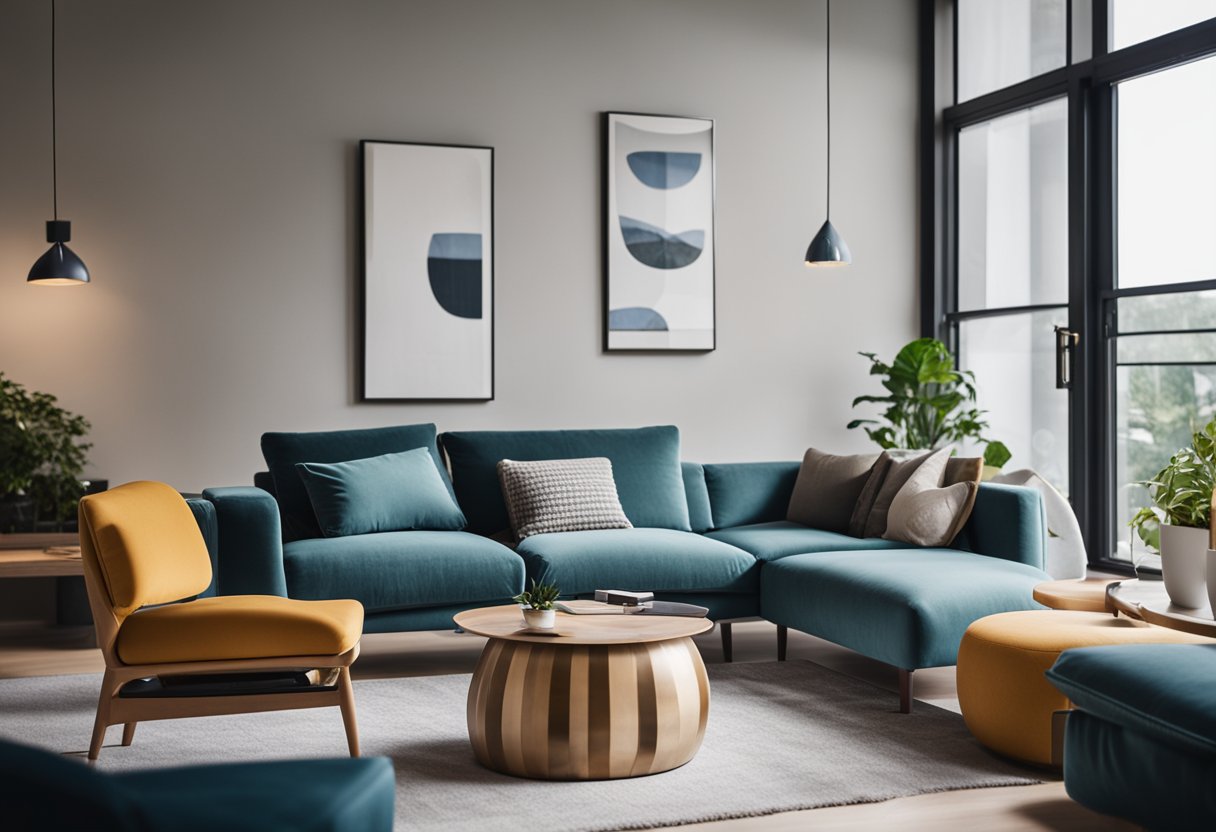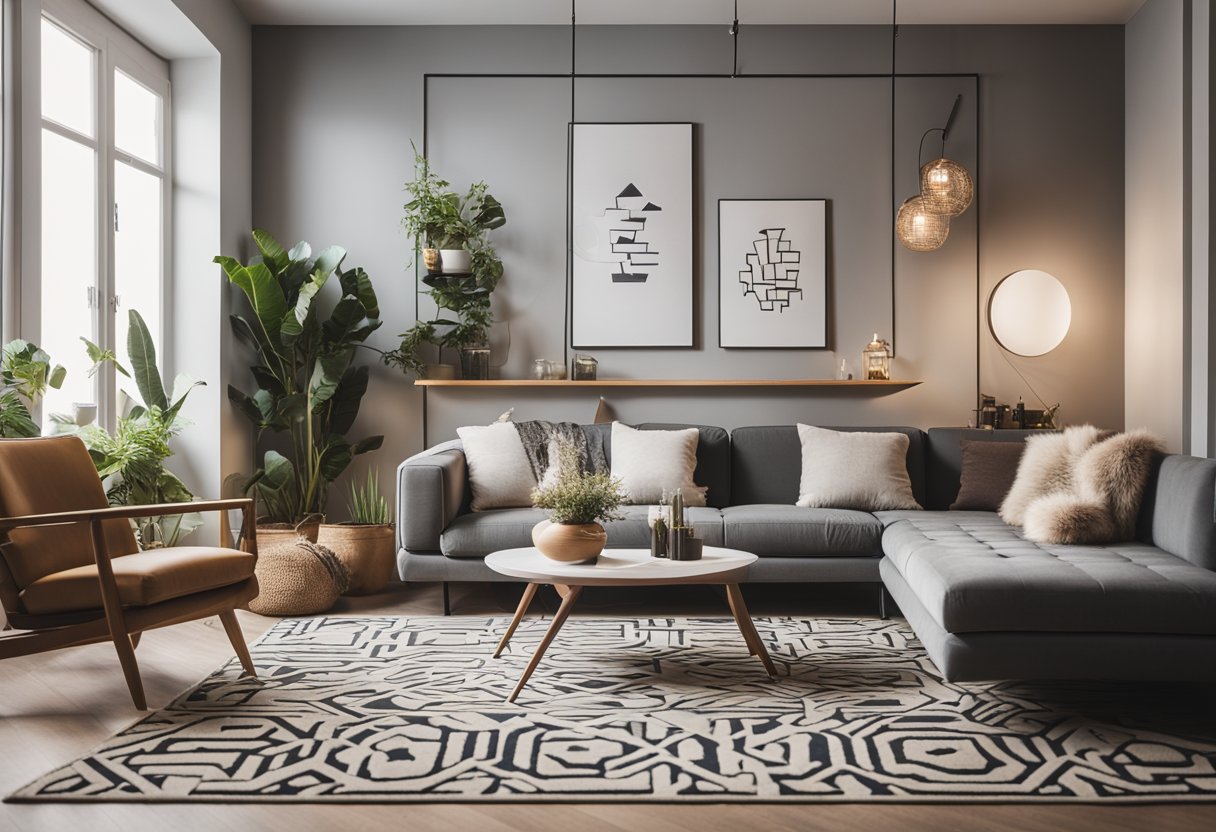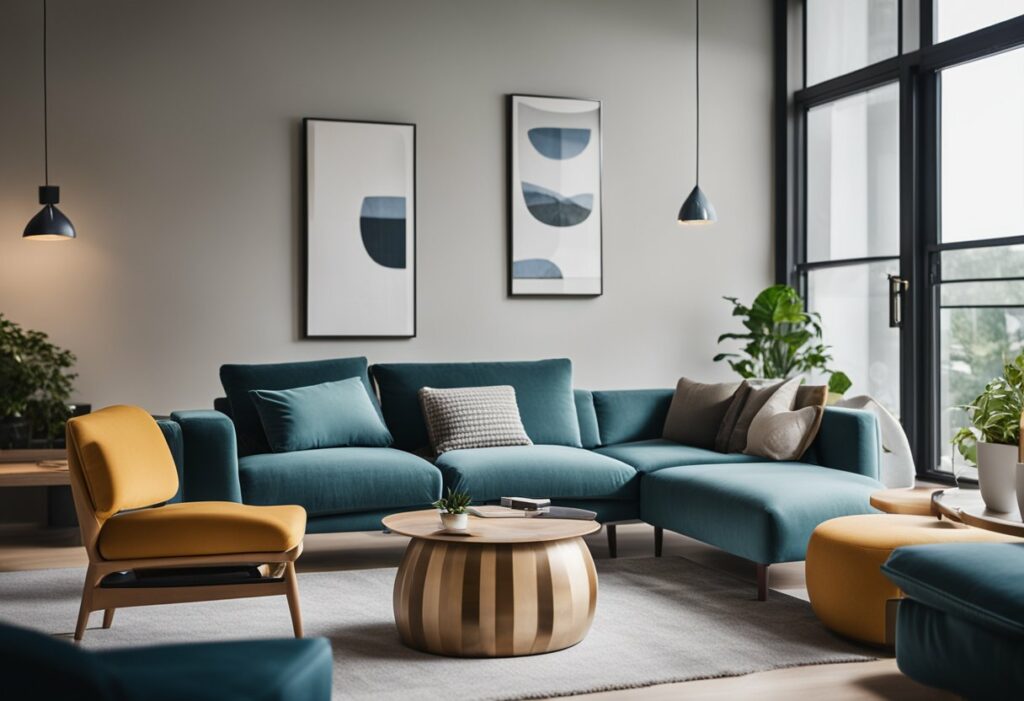Interior Design Cover Page: Create a Stunning First Impression
Are you looking for inspiration to create an interior design portfolio cover page that stands out? A well-designed cover page can make all the difference in capturing the attention of potential clients and employers. Your cover page should reflect your style, creativity, and attention to detail. In this article, we’ll provide you with tips and ideas on how to design an interior design cover page that showcases your work and personality.

Designing Your Cover Page Your cover page should be visually appealing and professional. It should include your name, contact information, and a brief description of your work. You can use a photo of your best project as the background or a graphic design that reflects your style. Use fonts that are easy to read and complement your design. Consider using colours that match your branding or the colours used in your portfolio.
Final Touches and Publishing Once you’ve designed your cover page, it’s time to add the final touches. Make sure all your information is correct and up-to-date. Proofread your text for spelling and grammar errors. Save your cover page in a high-resolution format and in a file type that is easy to share. You can publish your portfolio online or print it out and present it in person.
Key Takeaways
- Your interior design cover page should be visually appealing and professional.
- Include your name, contact information, and a brief description of your work.
- Use a photo of your best project as the background or a graphic design that reflects your style.
Designing Your Cover Page

Designing the perfect cover page for your interior design portfolio is an exciting opportunity to showcase your creativity and skills. Your cover page is the first impression that a potential client or employer will have of your work, so it’s important to make it visually appealing and professional. Here are some tips to help you design a cover page that will make a lasting impression.
Choosing the Right Images
Images are a crucial aspect of your cover page. They should be high-quality and relevant to your work. Choose images that highlight your style and showcase your best work. Consider incorporating sketches, floor plans, renders, or professional photography of your completed projects. Collections of images that evoke a particular style or mood can also be effective. Websites such as Freepik or Aim Design Studio offer a range of high-quality images that can be used for free or at a low cost.
Selecting a Compelling Theme
Your cover page should have a compelling theme that reflects your personal brand and style. Consider your target audience and the message you want to convey. If you’re a freelance interior designer, a creative portfolio website or a social media page may be the perfect platform to showcase your work. If you’re a student, your cover page should reflect your education and skills. Nature or travel themes can be effective for creating a calming or inspiring mood.
Typography and Colour Palettes
Typography and colour palettes are important design elements that can help convey your style and message. Choose fonts and colours that are consistent with your personal brand and reflect your style. Consider creating mood boards to help you choose the right colour palettes and fonts. Websites such as Canva offer a range of customizable portfolio templates that can help you create a professional and visually appealing cover page.
Format and Layout Considerations
Format and layout are crucial design elements that can affect the readability and visual appeal of your cover page. Consider the format that you will be using for your portfolio, whether it be a PDF, Word document, or online portfolio. Choose a layout that is easy to read and visually appealing. Consider the use of white space, borders, and grids to help organize your content.
Incorporating Personal Branding
Incorporating personal branding elements such as logos or taglines can help make your cover page stand out. Consider incorporating your contact information, such as your email or website, to make it easy for potential clients or employers to get in touch with you.
Showcasing Key Projects and Skills
Your cover page should showcase your key projects and skills. Consider highlighting your best work or projects that are relevant to the job or client you’re targeting. Including sketches or floor plans can help showcase your design process and skills.
In conclusion, designing a cover page for your interior design portfolio is an exciting opportunity to showcase your creativity and skills. By choosing the right images, selecting a compelling theme, considering typography and colour palettes, format and layout, incorporating personal branding, and showcasing key projects and skills, you can create a visually appealing and professional cover page that will make a lasting impression.
Final Touches and Publishing

Congratulations, you’re almost there! You’ve worked hard on your interior design cover page, and now it’s time to add the final touches and get your book published. Here are a few things to keep in mind:
Optimising for Online and Print
Your cover page should look great both online and in print. Make sure the colours and images are high-quality and easily visible. You can use tools like Uni or Freepik to find high-quality images and graphics to use on your cover page.
If you’re designing your cover page yourself, make sure to use a high-resolution image and to save it in a format that’s suitable for both online and print use. You can use tools like AIM Design Studio to help you create a professional-looking cover page.
Adding Contact and Professional Information
Your cover page is a great place to include your contact and professional information. This could include your name, email address, phone number, and website. You can also include information about your education and professional experience.
Make sure to format this information in a clear and easy-to-read way. You can use tables or bullet points to make it easier to read.
Leveraging Online Platforms
In addition to your cover page, you can also use online platforms to showcase your interior design work. Consider creating a creative portfolio or portfolio website, or using social media pages like Instagram or Pinterest to showcase your work.
Make sure to include links to these platforms on your cover page and in your contact information. This will help potential clients and publishers find and connect with you online.
By following these tips and adding the final touches to your interior design cover page, you’ll be well on your way to publishing your book and showcasing your work to the world.
Frequently Asked Questions

What are the essential elements to include on an interior design cover page?
An interior design cover page should be visually appealing and include key information about your portfolio. Some essential elements to include are your name, contact information, and a professional photo. You can also consider including a brief tagline or mission statement that showcases your design philosophy.
Where can I find free templates for my interior design portfolio’s cover page?
There are many websites that offer free templates for interior design cover pages, such as Canva, Adobe Spark, and Piktochart. These templates can help you create a professional-looking cover page without having to design it from scratch.
How can I make my interior design cover page stand out to potential clients?
To make your interior design cover page stand out, you should focus on creating a unique and eye-catching design. Consider using bold colours, interesting typography, and high-quality images. You can also showcase your best work on the cover page to give potential clients a sense of your design style.
What are some creative examples of interior design cover pages?
Some creative examples of interior design cover pages include using a minimalist design with a pop of colour, incorporating geometric shapes, and using a high-quality photograph of your work. You can also consider using a unique layout or typography to make your cover page stand out.
How should I introduce my style on the cover page of my interior design magazine?
To introduce your style on the cover page of your interior design magazine, you should consider using a high-quality image of your work that showcases your design style. You can also include a brief description or tagline that highlights your design philosophy and approach.
What tips can you share for crafting an engaging cover page for my architecture project?
To craft an engaging cover page for your architecture project, you should focus on creating a visually appealing design that showcases your work. Consider using a high-quality photograph or rendering of your project, and incorporating interesting typography and layout. You can also include key information about your project, such as its location and design features.



